Aquaponics systems come in various sizes and designs and offer numerous benefits, including efficient use of water and space, minimal environmental impact, and the ability to produce both fish and vegetables in a single integrated system.
While aquaponics offers many advantages, it also presents unique challenges that can affect its performance and overall productivity. Common issues, such as water quality fluctuations, fish health problems, and plant nutrient deficiencies can arise due to various factors, such as environmental conditions, system design flaws, or improper maintenance practices.
Identifying and addressing these common issues is crucial for maintaining the stability and sustainability of an aquaponics system. Ignoring problems or allowing them to escalate can lead to reduced crop yields, poor fish health, and ultimately system failure. This is why proactive management and timely intervention are essential to ensure the long-term success of an aquaponics system.
This blog will discuss the most common problems growers encounter in aquaponics and provide practical solutions. By understanding these challenges and implementing effective strategies, aquaponics growers can unlock the full potential of their systems and cultivate healthy, thriving ecosystems.
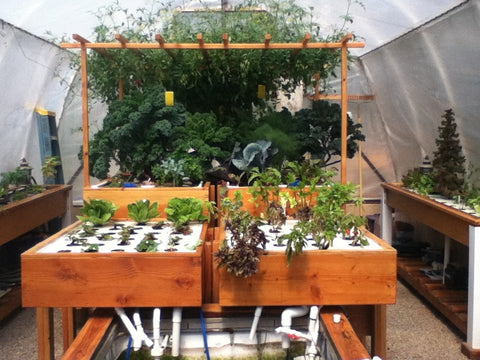
The Importance of Identifying and Addressing Common Issues
While aquaponics offers many advantages, it also presents unique challenges that can affect the system's performance and overall productivity. Common aquaponics problems can arise because of various factors, such as environmental conditions, system design flaws, or improper maintenance practices.
Identifying and addressing these common problems is crucial for maintaining the stability and sustainability of an aquaponics system. Ignoring problems or allowing them to escalate can lead to reduced crop yields, poor fish health, and ultimately, system failure. By understanding these challenges and implementing appropriate solutions, aquaponics growers can overcome problems and maximize the productivity and efficiency of their systems.

Problem 1: Poor Water Quality
Water quality is a crucial aspect of an aquaponics system as it directly affects the health and growth of fish and plants. Factors such as pH, temperature, oxygen levels, and nutrient levels must be within optimal ranges to ensure the system's success.
Addressing the causes of poor water quality, understanding its effects on plant and fish health, and implementing proactive solutions can create a thriving and sustainable aquaponics system. Regular monitoring and maintenance are key to ensuring the long-term success of an aquaponics system.
Causes of Poor Water Quality in Aquaponics Systems:
- Accumulation of uneaten fish feed and fish waste, leading to ammonia and nitrate buildup.
- Overfeeding of fish, resulting in excess organic matter in the water.
- Lack of beneficial bacteria to break down ammonia and nitrate.
- pH fluctuations due to factors like decaying plant matter or inadequate buffering capacity.
- Presence of harmful chemicals or contaminants in the water source.
Effects on Plant and Fish Health:
- High levels of ammonia and nitrate can be toxic to fish which causes stress, reduced growth, and even mortality.
- Poor water quality can lead to nutrient deficiencies in plants that can affect their growth and productivity.
- Algae blooms and pathogens thrive in nutrient-rich water which can pose a threat to both fish and plants.
- Imbalanced pH levels can hinder nutrient uptake by plants and disrupt the overall ecosystem balance.
Solutions for Maintaining Optimal Water Quality:
- Regular testing of water parameters such as ammonia, nitrite, nitrate, pH, and temperature to monitor the system's health.
- Implementing proper filtration systems, such as mechanical filters, biofilters, and UV sterilizers can remove solids and harmful compounds from the water
- Introducing beneficial bacteria through system cycling can establish a healthy nitrogen cycle.
- Performing partial water changes to dilute accumulated toxins and replenish essential nutrients.
- Adjusting feeding practices to prevent overfeeding and minimize waste production.
- Ensuring adequate aeration and circulation to maintain oxygen levels and prevent stagnation.
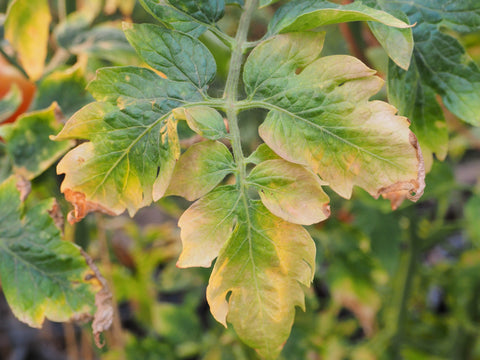
Problem 2:Nutrient Deficiencies
Addressing nutrient deficiencies promptly and implementing strategies to maintain a balanced nutrient profile in aquaponics systems, ensure healthy plant growth, and maximize the productivity of their crops.
Common Signs of Nutrient Deficiencies in Plants:
- Yellowing or browning of leaves
- Stunted growth or wilting
- Leaf curling or distortion
- Reduced fruit or flower production
- Discoloration or spotting on leaves
Reasons Behind Nutrient Imbalances in Aquaponics Systems:
- Inadequate nutrient levels in the water due to fish waste not providing enough nutrients for plant growth
- pH levels outside the optimal range for nutrient uptake by plants
- Imbalance in the nitrogen cycle, leading to insufficient nitrogen for plant growth
- Lack of diversity in the types of fish or plants in the system, resulting in specific nutrient deficiencies
Strategies for Addressing Nutrient Deficiencies:
- Monitor pH levels regularly and adjust as needed to ensure optimal nutrient uptake by plants.
- Test water quality and nutrient levels to identify specific deficiencies and supplement with organic nutrients such as fish emulsion, seaweed extract, or compost tea.
- Introduce beneficial bacteria or microbes to help break down organic matter and release nutrients for plant uptake.
- Consider adding additional sources of nutrients, such as worm castings or vermicompost, to replenish essential elements in the system.
- Implement crop rotation or companion planting to diversify nutrient sources and prevent nutrient deficiencies in the long term.
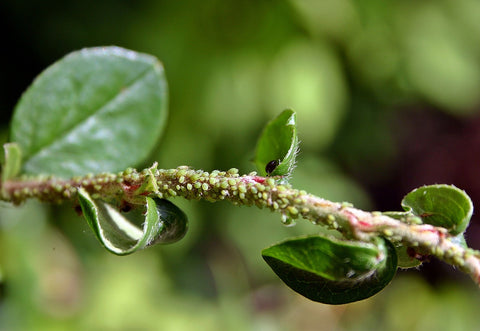
Problem 3: Pest Infestations
Aquaponics systems, like any other agricultural system, are susceptible to pest infestations that can negatively impact plant growth and fish health. Understanding the types of pests that can affect the system, the damage they can cause, and implementing integrated pest management techniques you can effectively manage pest infestations and maintain a healthy and thriving system.
Types of Pests That Can Affect Aquaponics Systems:
- Common pests that can affect aquaponics systems include aphids, whiteflies, spider mites, thrips, and caterpillars.
- These pests can feed on plant leaves, stems, and roots, leading to reduced plant growth and nutrient uptake.
- Some pests, such as fish lice and anchor worms, can directly impact the health of fish in the system.
Damage Caused by Pests to Plants and Fish:
- Pests can cause physical damage to plant tissues, leading to wilting, yellowing, and stunted growth.
- They can also transmit diseases and viruses which can compromise plant health.
- Pests that affect fish can cause skin lesions, reduced growth rates, and increased stress levels, impacting overall fish health and productivity.
How to Prevent and Control Pest Infestations in Aquaponics:
- Maintaining proper plant spacing, removing plant debris, and practicing good hygiene can help prevent pest infestations.
- Biological control methods, such as introducing beneficial insects or predatory mites, can help control pest populations without the use of chemicals.
- Mechanical control methods, like using physical barriers or traps, can be effective in reducing pest numbers.
- If chemical control is necessary, selecting organic pesticides and following proper application guidelines is essential to minimize harm to the aquaponics system.
- Some pests, such as fish lice and anchor worms, can directly impact the health of fish in the system.
- Pests that affect fish can cause skin lesions, reduced growth rates, and increased stress levels, impacting overall fish health and productivity.
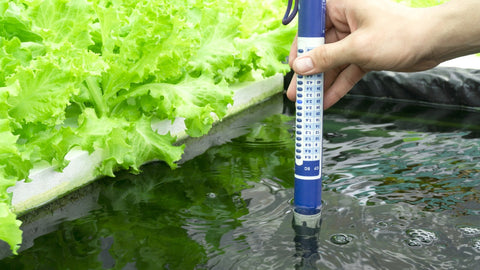
Problem 4: Temperature Fluctuations
Temperature fluctuations play a crucial role in the overall health and growth of plants in aquaponics systems, as well as the well-being of the fish within the ecosystem. Understanding the impact of temperature changes is essential for maintaining a balanced and thriving aquaponics setup.
The Impact of Temperature Fluctuations on Plant Growth and Fish Health:
- Plants in aquaponics systems are sensitive to temperature variations, as different species have specific temperature requirements for optimal growth.
- Fluctuations in temperature can affect the metabolism of plants which can lead to stunted growth, nutrient deficiencies, or even plant death.
- Fish health is also closely linked to water temperature, as sudden changes can stress the fish, weaken their immune systems, and make them more susceptible to diseases.
Causes of Temperature Fluctuations in Aquaponics Systems:
- External factors such as weather conditions, seasonal changes, or location can contribute to temperature fluctuations in aquaponics systems.
- Equipment malfunctions, inadequate insulation, or improper system design can also lead to temperature variations within the system.
- Overcrowding of fish or excessive plant growth can impact the temperature regulation of the water in the system.
How to Regulate Temperature:
- Installing heaters in the aquaponics system can help maintain a consistent water temperature, especially during colder months or in regions with extreme weather conditions.
- Shade cloths or covers can be used to protect plants from excessive heat and sunlight, preventing temperature spikes that may harm plant growth.
- Monitoring and adjusting the water flow, adding insulation to the system, or incorporating cooling systems can also help regulate temperature fluctuations in aquaponics setups.
- Overcrowding of fish or excessive plant growth can impact the temperature regulation of the water in the system.
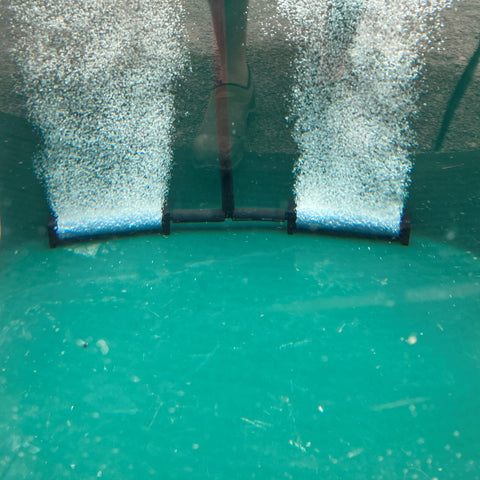
Problem 5: Oxygen Levels
Adequate oxygen levels are crucial for the health and well-being of both fish and plant roots in aquaponics systems. Oxygen plays a vital role in various biological processes, including respiration and nutrient uptake, making it essential for the overall balance of the ecosystem.
Signs of Low Oxygen Levels in Aquaponics Systems:
- Fish may exhibit gasping behavior at the water surface, reduced activity levels, or even mortality in severe cases.
- Plant roots may show signs of stress, such as browning or stunted growth, due to insufficient oxygen reaching their root systems.
How Increase Oxygenation in Aquaponics Systems:
- Adding air stones to the system, which release fine bubbles of oxygen into the water, increasing the dissolved oxygen levels.
- Improving water circulation through the use of pumps or aerators can also help distribute oxygen more effectively throughout the system.
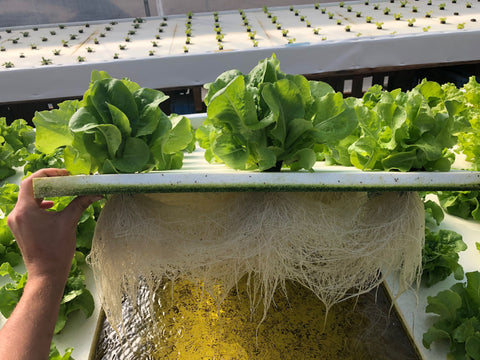
Problem 6: Algae Growth
Reasons for Algae Growth in Aquaponics Systems:
- Algae growth in aquaponics systems is primarily due to excess nutrients in the water, such as nitrogen and phosphorus, which are essential for plant growth but can also promote algae growth.
- Presence of sunlight or artificial light can also stimulate algae growth, as algae require light for photosynthesis.
Negative Effects of Excessive Algae on Water Quality and Plant Growth:
- Excessive algae growth can lead to decreased oxygen levels in the water, which can be harmful to fish and other aquatic organisms in the system.
- Algae can outcompete plants for nutrients, leading to stunted plant growth and reduced crop yields.
- Algae blooms can also cause water turbidity, reducing light penetration and hindering plant growth.
How to Control Algae Growth:
- Limiting the amount of light reaching the water surface can help control algae growth. This can be achieved by shading the aquaponics system or using light-blocking materials.
- Regular monitoring and adjustment of nutrient levels in the water can help prevent excess nutrients that promote algae growth. This includes proper feeding of fish and adjusting the fish feed to minimize nutrient runoff.
- Introducing algae-eating organisms, such as certain species of fish or snails, can help control algae growth in the system by consuming algae as part of their diet.
- Regularly cleaning and maintaining the aquaponics system, including removing excess algae and debris, can help prevent algae overgrowth and maintain water quality for optimal plant growth.
- Algae blooms can also cause water turbidity, reducing light penetration and hindering plant growth.
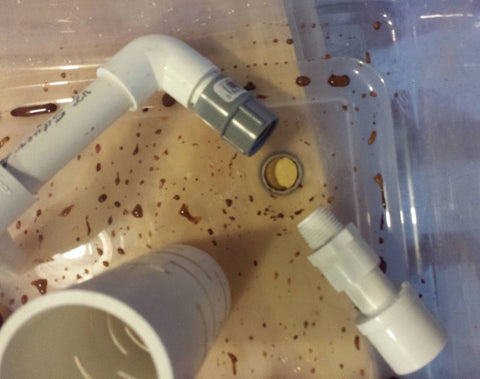
Problem 7: System Leaks
System leaks can be a common issue in aquaponics systems which can potentially lead to water loss, system damage, and compromised plant and fish health. Understanding the causes of leaks, the associated risks, and the steps for identifying and repairing them is crucial for maintaining the efficiency and sustainability of your aquaponics setup.
Common Causes of Leaks in Aquaponics Systems:
- Poorly sealed pipes, fittings, or connections can result in water leakage.
- Over time, components such as hoses, valves, or tanks may degrade, leading to leaks.
- Fluctuations in water pressure within the system can cause weak points to develop leaks.
- Accidental damage or impact to system components can result in leaks.
- Exposure to water and chemicals can cause corrosion in metal components, leading to leaks.
Risks Associated with System Leaks:
- Leaks can result in the loss of water from the system, affecting the overall water balance and potentially stressing fish and plants.
- Continuous leaks can damage system components, leading to costly repairs or replacements.
- Leaks can introduce contaminants into the system, compromising water quality and the health of fish and plants.
- Leaks may require additional energy to maintain water levels, impacting the overall efficiency of the system.
Steps for Identifying and Repairing Leaks:
- Conduct routine visual inspections of the system to identify any signs of leaks, such as water puddles, damp spots, or decreased water levels.
- Use a pressure gauge to test different sections of the system for leaks under controlled conditions.
- Isolate the suspected leak area to pinpoint the source and assess the extent of the damage.
- Depending on the severity of the leak, repair or replace the affected components, such as seals, pipes, or fittings.
- After repairs, test the system for leaks and monitor it closely to ensure the issue has been resolved.
Conclusion
Aquaponics is a highly rewarding and sustainable method of food production, but it is not without its challenges. Regular monitoring and maintenance of the system, and the willingness to adjust and adapt as needed are key to overcoming these challenges and achieving a thriving and productive aquaponic system. Understanding and addressing the most common problems as soon as you notice them can help to ensure the success and longevity of the system. With the right approach and knowledge, aquaponics can provide a reliable and sustainable source of fresh, healthy food for years to come.






Skip
May 31, 2022
What is causing silvery spots on my swiss chard? Sometimes the one next to it is fine. It happens on mature plant and then they die.